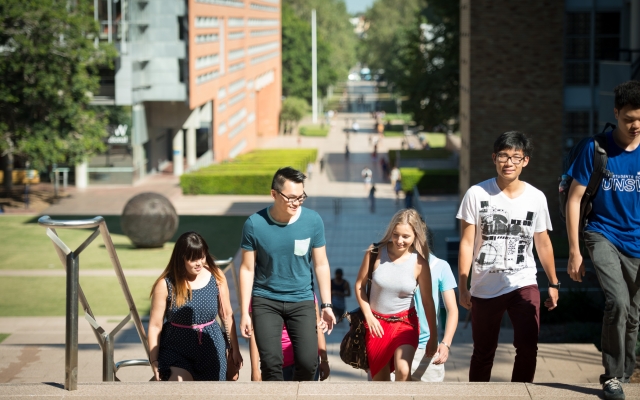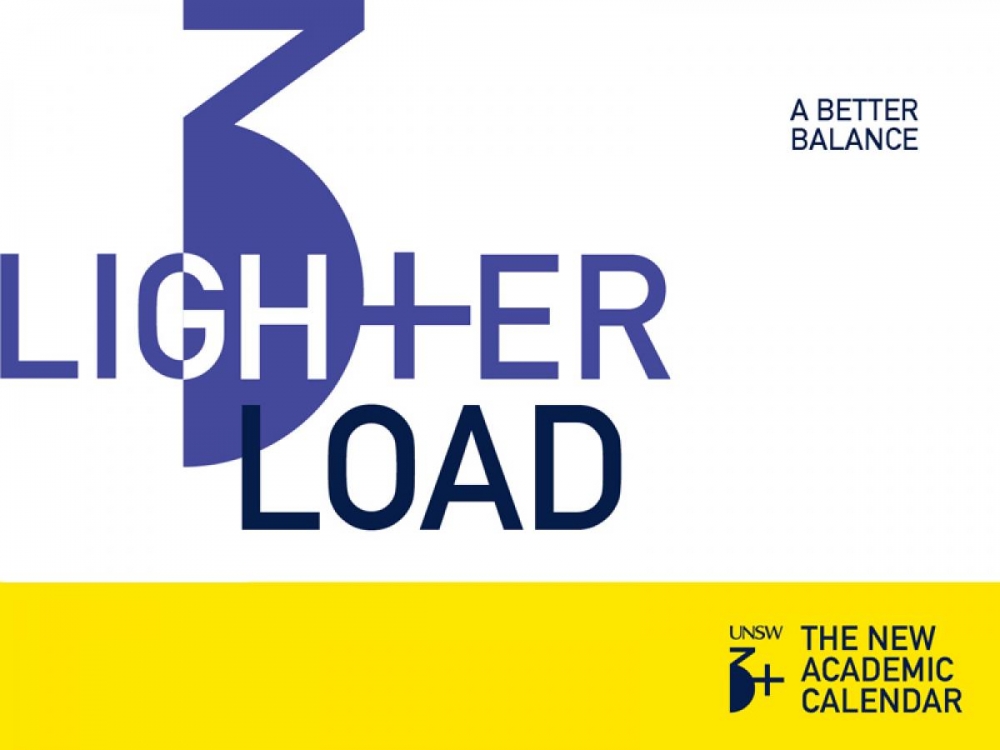
If you haven’t already heard (or you have, but thus far successfully ignored it), do please prick up your ears because change is a-coming. So, what’s the big news? Drum roll please…
UNSW is moving to a new academic calendar.
“Whoopee do,” I hear you cry, “But how does that affect me?” “What happens to my summer?” “Why do we need to change anyway?” and “What do I need to do about it?”
Known as UNSW3+, the new calendar consists of three 10-week teaching terms, and an optional 5-week summer term. The new timetable starts in O-week, February 2019, but now is the time to start brushing up on the changes so you can stay on track with your degree and complete in your anticipated timeframe.
There are several reasons behind the change to UNSW3+ says Sophie Burrows, Student Engagement Manager, but one of the biggest reasons is to give students flexibility to vary and spread their study load across three terms.
“It is UNSW’s job to prepare students for success in the 21st century, and UNSW3+ is part of a paradigm shift that will allow students to tailor their learning experience. There is an element of having to reimagine what a university education looks like, and it might take a little research and planning to fully understand and unlock all the possibilities,” she says.
“There is no one-size-fits-all pathway in the new calendar, in fact there are as many pathways as there are students, which is a huge part of its appeal,” continues Sophie Zdenkowski, Work Integrated Learning Project Manager for the UNSW3+ team.
“The beauty of this calendar is that it can be so personalised and what we might say to one student based on their experience and goals completely varies to the next.”
According to Zdenkowski, another big advantage for students is that UNSW3+ is based on the US quarter system used by leading institutions like Stanford, University of Chicago, Northwestern and UCLA.
“By aligning with northern hemisphere university calendars, we expect to be able to facilitate new global partnerships and experiences for our students, such as exchange and internship opportunities,” Zdenkowski says.
Don’t get left behind. Please read your UNSW emails and please engage with us because we are here to help you coast smoothly through this transition.
Sophie Burrows, Student Engagement Manager, UNSW3+ Team
Campus use is also a big driver of the change. “Significant and sustained investment over the last decade and more has transformed UNSW into a world class campus. Increasing usage and having the vibrant campus life that UNSW is known for, for more of the year, is a no brainer,” continues Burrows.
“It’s a much more efficient and sustainable way to operate and means UNSW will not only be a vibrant campus year-round but will also be able to continue to grow within its existing footprint.”
In terms of the nitty gritty, there is plenty of information out there to help you (see the links below) but essentially, students will take a maximum of three (rather than the current four) courses per term.
Eight courses will remain the normal study load, but they can be spread more across the year freeing up time for new experiences such as internships, volunteering or study abroad. Additionally, nine courses per year (three per term) is an option that some students may choose. While the overall amount of holiday time is reduced, this even spread of study will encourage a deeper learning of each subject and better study/life balance.
The minimum study load required to be a full-time domestic student (and retain the associated benefits) will be six courses with at least one course in each of the three terms. All courses have been adjusted to fit the new 10 teaching-week terms and there will be a similar number of contact hours for each course over the term as there is currently.
“One of the concerns specific to the engineering student body is how the 60-day industrial training requirement will work under the new calendar and to address this the Faculty is developing a highly detailed FAQ document for students,” says Zdenkowski.
“In fact, in the case of students who choose to take nine courses per year, this will create a whole term’s worth of space in their degree for an internship or their industrial training without delaying graduation. It also means they’ll face less competition against other Australian university students who don’t have the flexibility to take an internship outside of summer,” she continues.
Our primary message for the whole student body regarding this change, says Burrows, is:
Don’t get left behind. Please read your UNSW emails and please engage with us because we are here to help you coast smoothly through this transition.
“Our best advice is to encourage students to visit the links below and inform themselves about what’s going on. There will be loads of opportunities, but to make the most of them they do need to be active participants in their own calendar,” she continues.
More information:
New Academic Calendar information
If you have any other questions, please contact Sophie: s.burrows@unsw.edu.au
